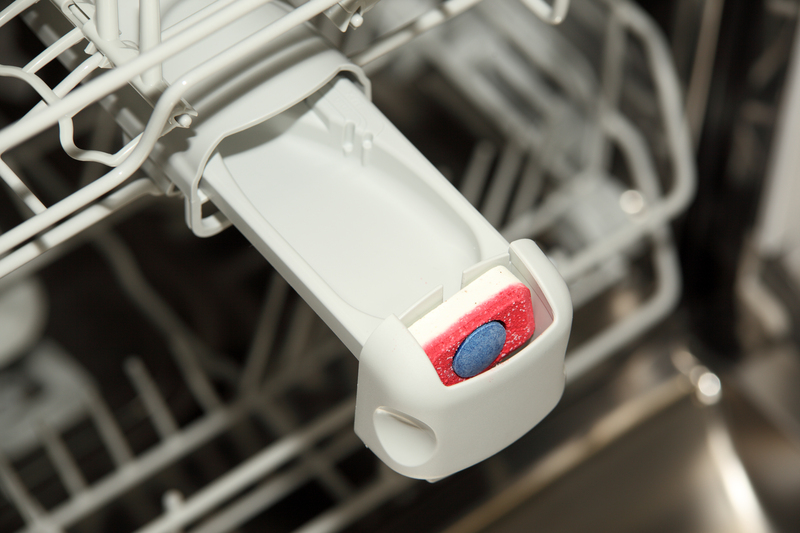Transform Your Bathroom into a Mold-Free Retreat
A fresh, clean, and mold-free bathroom isn't just pleasing to the eye--it directly contributes to your family's health and comfort. But if you've battled mold in your bathroom, you know how stubborn and relentless it can be. The good news? With the right methods and smart upgrades, you can turn your bathroom into a mold-free sanctuary. In this comprehensive guide, you'll discover expert tips and techniques for preventing and eliminating bathroom mold, choosing the right materials, and creating a stylish, low-maintenance, and healthy bathroom environment.
Why Mold Likes the Bathroom: Understanding the Enemy
Before diving into solutions, let's understand why bathrooms are such a mold magnet. The biggest culprits are excess moisture, poor ventilation, and organic material (like wood or dust) that provide food for mold. Showers, hot baths, and even washing hands release humidity into the air, often creating a humid, damp environment perfect for mold growth.
- High humidity: Bathrooms often have high humidity, especially if fans aren't used during showers or baths.
- Poor ventilation: If moist air can't escape, it lingers and accumulates on surfaces.
- Absorbent materials: Wood, fabric, and even dust can soak up water and feed mold spores.
- Warm temperatures: Mold thrives best in warm, humid environments; a typical bathroom fits the bill.
So, the pathway to a truly mold-free bathroom retreat starts with cutting off these conditions--preferably before they invite unwanted fungal guests.

Early Mold Warning Signs (Don't Ignore These!)
Spotting the early signs of mold can save you time, money, and frustration. Here's what to look for:
- Musty odor: Does your bathroom smell earthy or stale even after cleaning? That's often mold hiding behind tiles or under the sink.
- Spots and stains: Tiny black, brown, or green dots on grout, ceilings, or caulking are classic mold colonies.
- Peeling paint or wallpaper: Moisture trapped beneath surfaces often leads to peeling and can signal hidden mold.
- Health symptoms: Headaches, sneezing, coughing, or watery eyes in the bathroom may be triggered by mold spores in the air.
Essential Steps to Make Your Bathroom a Mold-Free Sanctuary
1. Supercharge Ventilation: Let Your Bathroom Breathe
Perhaps the single most important step in the fight against mold is proper ventilation. Here's how to upgrade your bathroom's airflow:
- Install a high-quality exhaust fan. Choose a fan that matches your room's size (measured in CFM--cubic feet per minute). Run it during and after showers for at least 20-30 minutes.
- Open windows and doors. Whenever possible, let fresh air circulate to quickly dry out moist surfaces.
- Consider a dehumidifier. In small, windowless bathrooms, a compact dehumidifier can keep humidity comfortably below 50%.
2. Choose Mold-Resistant Materials and Finishes
Selecting the right materials is vital if you want a permanently mold-free bathroom retreat. These upgrades make a huge difference:
- Mold-resistant drywall (greenboard or purple board): Unlike standard drywall, these resist moisture and won't rot or provide a buffet for mold.
- Waterproof paint: Use mold-inhibiting or antimicrobial paints on walls and ceilings.
- Tile all the way up: Consider floor-to-ceiling tiles in the shower and on bathroom walls. Tiles are easy to wipe down and don't absorb water.
- Grout and caulk with antimicrobial formulas: Mold-resistant grout and caulk slow down spore growth dramatically.
- Non-porous surfaces: Solid-surface counters (like quartz or granite), glass, and sealed concrete resist water and make cleaning a breeze.
3. Stop Leaks--and Do It Fast!
A single drip under the sink or around the toilet is an open invitation for mold spores. Regularly check all:
- Toilet bases and tank seals
- Sink pipes and supply lines
- Shower/tub caulking
- Behind and under the washing machine (if in your bathroom)
Fix any problems right away. Even tiny leaks can be major trouble over weeks or months.
4. Win the War on Humidity: Simple Daily Habits
Your daily bathroom routine can either encourage mold growth or help banish it for good. Try these mold-fighting habits:
- Wipe down shower walls and doors after every use. A squeegee or towel only takes a minute but makes a big difference.
- Hang towels and bathmats to dry separately. Avoid piles of damp fabric.
- Leave shower doors/curtains open after bathing. It speeds drying and discourages mold from taking hold.
- Keep bottles and toiletries off shower floors. They trap water, encouraging mold to grow underneath.
5. Clean Like a Pro--with Mold-Fighting Products
Regular cleaning is essential, but what you use matters. The best mold-prevention cleaners include:
- Vinegar spray: Cheap and effective, vinegar kills many mold types. Use undiluted white vinegar to spray down shower walls, grout, and around sinks weekly.
- Baking soda scrub: Non-abrasive and natural, perfect for tile and grout.
- Hydrogen peroxide: Great for spots that need serious disinfection. Spray, let it sit, then wipe clean.
- Commercial mold removers: Look for EPA-approved formulas that target mold and mildew without harsh fumes.
Tip: Never mix cleaning agents like vinegar and bleach--dangerous fumes can result.
6. Organize for Airflow and Easy Cleaning
The way you organize your bathroom can have a big effect on mold risk. Smart storage and layout tips include:
- Wall-mounted shelves and hooks: Keep items off countertops and floors, allowing air to circulate freely.
- Open, wire shelving: Less likely to trap moisture compared to solid cabinets.
- Minimal decor: Fabric window treatments, framed prints, and decorative towels look great, but can harbor mold if not maintained.
Mold-Resistant Bathroom Design Trends and Upgrades
A modern, mold-resistant bathroom doesn't have to look sterile or boring. Here are the most stylish (and smart) upgrades for a mold-free retreat:
1. Frameless Glass Shower Doors
Frameless glass is easier to wipe clean and eliminates the rubber or metal tracks that can harbor hard-to-clean grime and mold. Pair with water-repelling coatings for even less buildup.
2. Floating Vanities & Sinks
Wall-mounted vanities and vessel sinks leave extra space underneath for excellent airflow and easier floor cleaning--two enemies of bathroom mold.
3. Large-Format Tile for Walls & Floors
Bigger tiles mean fewer grout lines, and grout is where mold usually starts. Choose large rectangles or squares for a sleek look and fewer nooks for moisture to hide.
4. No-Threshless or Curbless Showers
These modern designs make cleaning much simpler, and the smooth transition on the floor means less chance for water pooling in cracks or seams.
5. Smart Bathroom Tech
- Humidity-sensing exhaust fans: These fans automatically turn on when humidity rises, helping maintain the right moisture levels even when you forget.
- Touchless faucets and soap dispensers: Reduce water splashes and help keep surfaces cleaner--less moisture means less mold!
- Underfloor heating systems: Warm floors dry faster, minimizing the time standing water has to feed mold growth.
Don't Forget: Post-Remodel Prevention for a Mold-Free Haven
Remodeling your bathroom is a great opportunity to start over, but continued vigilance keeps it mold-free for life. Remember to:
- Keep up with regular cleaning: Even with the best materials, no bathroom is truly immune without routine care.
- Inspect for leaks biannually: Catching tiny leaks before they grow saves both money and hassle.
- Reapply seals and grout when needed: Old, failing grout or caulk becomes a mold hotspot--keep it fresh and maintained!
Natural Preventatives & DIY Remedies for Everyday Defense
Natural, non-toxic agents can be powerful allies in keeping your bathroom a mold-free retreat. Add these to your regular maintenance:
- Tea tree oil spray: Mix a teaspoon with a cup of water, spray on mold-prone surfaces, and leave to dry--it's a proven antifungal.
- Essential oil diffusers: Eucalyptus and lavender can help freshen the air and slow down mold growth.
- Charcoal or silica gel bags: Placing these in hidden corners will absorb excess moisture, keeping the air dry and mold-resistant.
Mold Cleanup: What If Mold Takes Hold?
Sometimes, despite our best efforts, mold takes root. Here's how to safely eradicate small-scale mold:
- Protect yourself with gloves, eye protection, and a breathing mask to avoid inhaling spores.
- Remove and dispose of heavily infested materials: If grout, caulk, or drywall are badly infested, remove and replace them.
- Scrub the surface with a mixture of water and detergent, then use a disinfectant such as vinegar, hydrogen peroxide, or a commercial mold cleaner.
- Dry thoroughly, then inspect for recurring spots after a few days.
Note: If mold is widespread, or if you smell strong mustiness that you can't trace, call in a professional mold remediation service--large infestations can hide deep in walls or floors, and pose health risks.
Expert Bathroom Remodeling for a Mold-Free Future
Considering a complete bathroom overhaul to finally win the war against mold? Here's what professional remodelers recommend:
- Design for airflow: Prioritize open layouts, vented skylights, and high-quality extractor fans.
- Upgrade plumbing: Insulate pipes, choose lead-free, corrosion-resistant materials, and ensure all connections are tight.
- Seamless waterproofing: Use waterproof membranes under all tiled surfaces and in high-risk splash zones.

Frequently Asked Questions about Mold-Free Bathrooms
What's the most common place for mold to start in the bathroom?
Shower grout and around bathtub caulking are the usual hotspots due to constant moisture. Ceilings are also at risk if steam isn't vented.
Can I make my bathroom 100% immune to mold?
While you can drastically reduce risk with diligent maintenance and smart design, no space is 100% immune. However, following this guide will keep your bathroom clean, fresh, and healthy.
How often should I check for signs of mold?
Monthly quick inspections are ideal, plus a thorough biannual check behind/under vanities and around all plumbing fixtures.
Does bleach kill mold in bathrooms?
Bleach can kill surface mold, but it doesn't remove the root (hyphae) in porous materials, and it may discolor grout or tiles. Vinegar is often the preferable all-purpose solution.
Conclusion: Enjoy a Long-Lasting, Mold-Free Bathroom Retreat
Transforming your bathroom into a mold-free haven is absolutely within your reach. By addressing moisture at the source, upgrading to mold-resistant materials, and keeping up with smart cleaning and organization, you'll enjoy a cleaner, healthier, and more inviting bathroom for years to come.
Have you tried any of these tips for your own mold-free bathroom transformation? Let us know your favorite strategies and success stories!